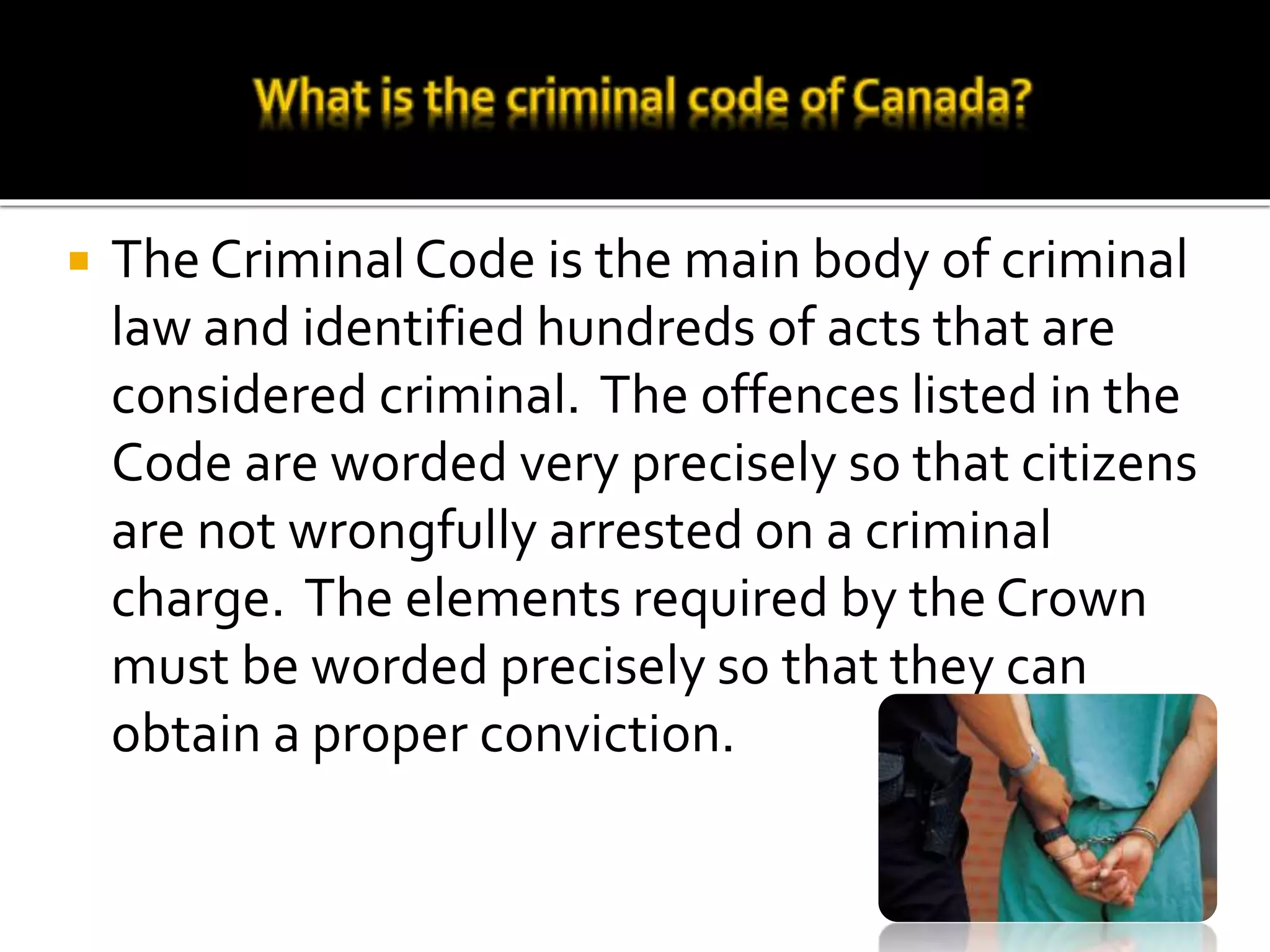The document outlines various criminal offences in Canada, including their elements and classifications. It discusses violent offences like homicide, murder, manslaughter, and assault. It also covers sexual assault and identifies three levels based on severity of the crime. Motor vehicle offences in the Criminal Code like dangerous operation and hit-and-run are explained. Impaired driving laws and penalties for exceeding blood alcohol limits while operating a vehicle are also summarized.






































